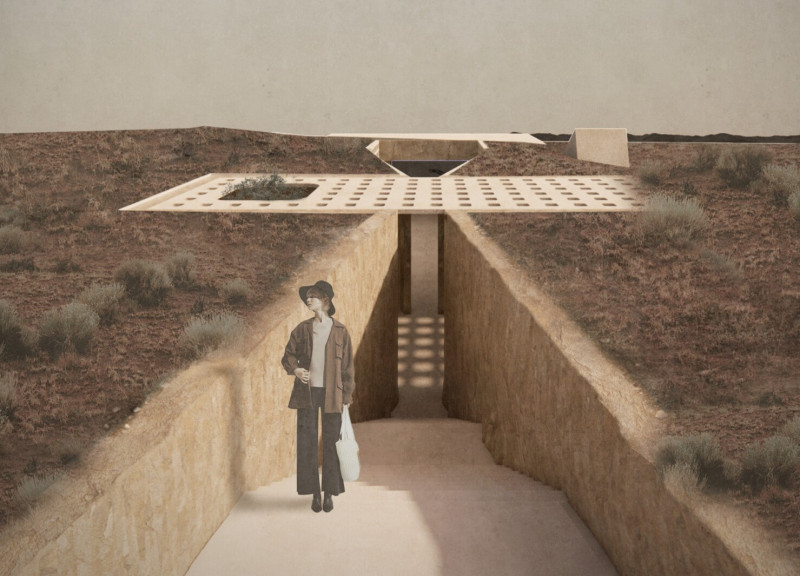5 key facts about this project
This project represents a commitment to sustainable architecture, showcasing innovative solutions to common urban challenges. By emphasizing energy efficiency and resource management, the design aligns with contemporary expectations for residential, commercial, or communal spaces, depending on its specified use. The integration of green building practices not only contributes to reducing the carbon footprint but also enhances the quality of life for its users.
Key elements of the design include a well-considered spatial layout, which promotes both functionality and comfort. Open-plan areas facilitate flexibility in usage, allowing residents or occupants to adapt the space according to their needs. The use of large windows and open spaces invites natural light, creating a warm and inviting atmosphere. This design choice not only enhances visual connections with the outdoors but also fosters a sense of well-being among users.
The material palette of the project is thoughtfully chosen, reflecting a blend of modern and traditional influences. Incorporating materials such as concrete, glass, timber, and steel, the design establishes a dialogue between durability and warmth. Concrete serves as a structural cornerstone, offering robustness, while glass elements create transparency, bridging indoor environments with nature outside. Timber adds a tactile quality, ensuring the interior remains inviting, while steel provides support and allows for creative interpretations of form. This careful selection of materials underscores the project’s focus on sustainability and aesthetic integrity.
Unique design approaches are evident throughout the project. For example, the facade is innovatively treated to respond to climatic conditions, mitigating heat gain while maximizing natural ventilation. This not only emphasizes the building’s efficiency but also contributes to a visually engaging exterior. The incorporation of green roofs or living walls provides insulation and fosters biodiversity, demonstrating a thoughtful consideration of environmental impact.
Landscaping plays an important role in this architectural design, enhancing the relationship between the built environment and the natural landscape. Outdoor spaces are designed not merely as residual areas but as integral components that encourage social interaction and recreational activities. Gardens, terraces, or courtyards create pockets of tranquility within the urban fabric, serving as informal gathering spaces that bridge the gap between nature and architecture.
Another interesting aspect of the project is its community focus, evident in its design that fosters inclusivity and interaction. Shared spaces are strategically placed to encourage social connections, allowing occupants to engage with one another in a more meaningful way. Such design aspects not only strengthen community ties but also promote a sense of belonging, which is particularly vital in increasingly urbanized cultures.
The architectural plans and sections reveal the thoughtful organization of spaces, illustrating the project's multifunctionality. By showcasing these elements, one can appreciate how the design accommodates various activities and lifestyles, appealing to a broad demographic. Understanding these architectural ideas helps to visualize the potential of the space and its adaptability over time.
This project serves as a compelling example of modern architecture that is not only functional but also considerate of its surroundings. It reflects evolving residential and community needs, presenting a model for future developments in urban areas. Interested readers are encouraged to explore the project presentation further for detailed insights into its architectural plans, sections, and design ideas that can inspire a deeper understanding of contemporary architectural practice.


 Berfin Bukan,
Berfin Bukan, 




















